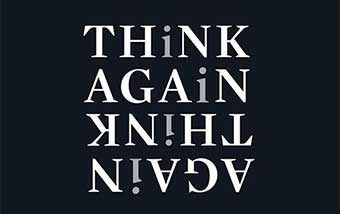The Music of the Universe
“How do such simple things as atomic nuclei, or even more elementary particles like neutrons or muons, ‘know’ their half life? . . . These objects are like hair trigger bombs in an storm environment. Space itself, seething with quantum fluctuations, supplies passing gusts, and every so often one is strong enough to to trigger an explosion. In this picture, nuclei are basically simple and passive. It is space, empty space! that is complex and active.
Nobel laureate physicist Frank Wilczek tells us about beta decay. It is radioactivity of certain atoms, which have spontaneous release of beta particles – electrons and neutrinos. This release is predictable . . . in time, but only with probability . . . in space. We can know how many atoms will decay in a unit of time, but not precisely which ones will decay, or where they will decay. This is all caused by the ongoing, spontaneous energy fluctuations of vacuum space – the Void, that energize the release of particles from atoms. And these energy fluctuations, of empty space, are the actual powerhouse of those mysterious fields, quantum fields, the most basic known elements of fundamental physical reality. They are the invisible, ghost power of the Universe. Predictable, when, probabilistic, where.
Yet, our lived world is one of predictability in both space and time, one of self-organization, arising out of , and floating in, it seems, this sea of random quantum field energy fluctuations. How can randomness form the ordered and predictable world?
Chvykov, et.al., in the journal Science, say that it is because of Rattling. Rattling is when the random responses of the ‘many body’ systems of matter, to the pounding of quantum field energy fluctuations, inevitably yields perturbations of synchronization, and this synchronization then brings forth order, in both time and space. In any infinite set of random collisions of movement, there will randomly – and inevitably – be collisions that repeat themselves, identically, in time and space, and these collisions, again, inevitably, foster further repeating and further establishment of the created patterns. As Isaac Newton stated in his third law – for every action, there is an equal and opposite reaction. And so, inevitably, the beat of synchronicity arises in the system, much like mechanical clocks, on a shelf, eventually all tick and tock in unison.
And so, despite a basis of random, unpredictable, fundamental actors and actions – the energy fluctuations of quantum fields – order inevitably and always arises. Randomness only exists theoretically. It is a useful abstraction. but real . . . it is not.
From nothing comes a beat, and from the beat, order. Not unlike how melody arises from iterations of rhythm. John Lennon – of the Beat-les – once said: “Its got to have a beat.”
Reality is the ‘music of the spheres’. The world is a musical instrument.


